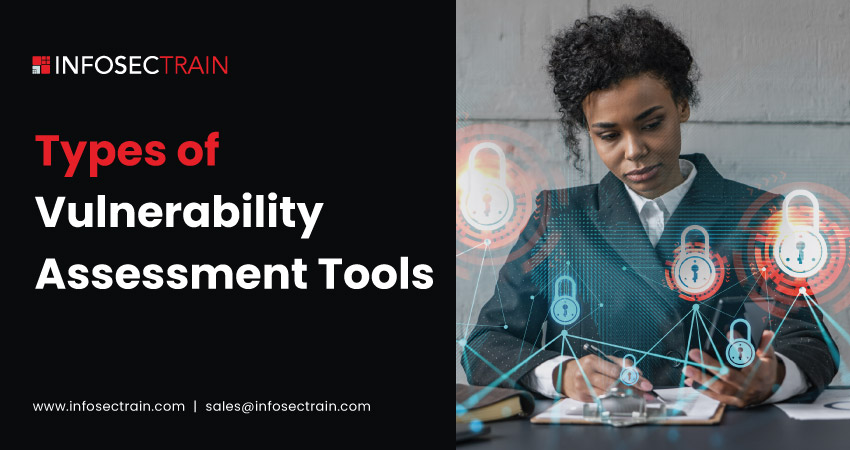Types of Vulnerability Assessment Tools
Vulnerability assessment tools are critical components in information security management. Their function is to pinpoint potential security flaws before an attacker exploits them. Various methods and solutions can be employed to conduct a vulnerability assessment. Choosing a suitable assessment strategy is crucial in reducing an organization’s risks.

This subtopic of CEH Module 5 provides an overview of the diverse strategies, solutions, and tools utilized for vulnerability assessments.
Different Approaches for Vulnerability Assessment
When evaluating vulnerability assessment methods, four primary types emerge: product-based solutions, service-based solutions, tree-based assessment, and inference-based assessment.
- Product-Based Solutions: These are implemented within the organization’s internal network. They may be located in a private or non-routable network segment or within Internet-addressable areas. A limitation of product-based solutions is that if they are confined to a private network behind a firewall, they may be unable to detect attacks from outside the network.
- Service-Based Solutions: These are provided by external entities, such as auditing or security consulting organizations. While some service-based solutions are situated within the network, others operate externally. A potential disadvantage of service-based solutions is the possibility that attackers could perform audits on the network from an external vantage point.
- Tree-Based Assessment: In this method, auditors select specific strategies tailored for each type of machine or system component within the IT environment. For example, one type of scanner may be chosen for Windows servers, another for databases, and another for Linux servers. The process depends on the administrator to initiate the scan with some baseline intelligence and proceed to scan continuously without integrating new information during the scan.
- Inference-Based Assessment: This approach begins by cataloging the protocols present on a machine. Once a protocol is identified, the scanning process detects the associated ports and services, such as an email, web server, or database server. Upon identifying services, it targets specific vulnerabilities on each machine and executes tests that are only relevant to the discovered services.
Functionality of Vulnerability Scanning Solutions
The functionality of vulnerability scanning solutions is pivotal for any organization that processes and manages significant amounts of data, often including sensitive information unique to that organization. Attackers may attempt to uncover and exploit vulnerabilities within the organization’s systems to access confidential data illegitimately. Vulnerability analysis identifies and evaluates areas within the organizational network that are susceptible to risk. This involves employing various tools to detect vulnerabilities and generating reports on the findings.
The vulnerability scanning process is typically composed of three main actions:
- Identifying Active Devices: The initial step in the scanning process is pinpointing active devices within the target network using various scanning methods.
- Cataloging Services and Operating Systems: Following the identification of active hosts, the subsequent action is to catalog the open ports and services and ascertain the operating systems running on the identified systems.
- Evaluating for Vulnerabilities: The final step involves scrutinizing the identified services and operating systems for any known vulnerabilities.
Types of Vulnerability Assessment Tools
Vulnerability assessment tools are categorized into six different types: host-based vulnerability assessment tools, application-layer vulnerability assessment tools, depth assessment tools, scope assessment tools, active and passive tools, and location and data-examination tools.
- Host-Based Vulnerability Assessment Tools: These are tailored for servers that support a range of applications like web services, critical file storage, databases, and directories and provide remote access. They are proficient in detecting substantial levels of vulnerabilities and supply the necessary information about the updates (patches) applied. Such tools determine the operating system on a given host and scrutinize it for prevalent vulnerabilities in applications and services.
- Depth Assessment Tools: These tools are employed to unearth and pinpoint previously unknown vulnerabilities within a system. Tools like fuzzes, which send random and unpredictable input to a system’s interface, are commonly used in depth assessment to identify vulnerabilities at a granular level. Many depth assessment tools leverage a database of known vulnerability signatures to assess whether a product is susceptible to particular vulnerabilities.
- Application-Layer Vulnerability Assessment Tools: These tools are crafted to accommodate a broad spectrum of operating system types and application architectures. They can recognize many security vulnerabilities by monitoring system activities across the Internet through an external router, firewall, or web server, referred to as an external vulnerability assessment. Vulnerabilities detected by these tools include those that can lead to external Denial-Of-Service (DoS) or Distributed Denial-Of-Service (DDoS) attacks, network data breaches, and other security issues. The Analyst uses these tools to identify and record vulnerable resources. Updates to these vulnerability findings are regularly integrated into the assessment tools, which are especially geared towards analyzing web servers and databases.
- Scope Assessment Tools: These tools are designed to evaluate the security stature of applications and operating systems by testing for vulnerabilities. They come equipped with standard controls and an interface that enables users to execute appropriate scans and produce standard reports based on the findings. Scope assessment tools are specifically created to analyze vulnerabilities within a certain application or category of applications.
- Active and Passive Tools:
Active tools are utilized to conduct vulnerability assessments on network resources that are being actively used. The key benefit of an active scanner lies in the ability of the system administrator or IT manager to have substantial control over when and how the vulnerability scans are conducted. However, active scanners are not suitable for critical operating systems since they engage system resources that could interfere with other ongoing tasks.
Passive tools are designed to minimize their impact on system resources. They observe system data and conduct data analysis on a separate system. A passive scanner first collects detailed data on the system, including information about the active processes, and then evaluates this data against a predetermined set of rules.
Location and data examination tools for vulnerability assessment come in various forms, including:
- Network-Based Scanner: This type of scanner interacts exclusively with the actual device on which it’s installed and reports findings back to that same device after completing the scanning process.
- Agent-Based Scanner: An agent-based scanner is installed on a single device but possesses the capability to assess multiple devices across the same network.
- Proxy Scanner: Proxy scanners are a type of network-based scanner that can perform scans on multiple networks from any device connected to the network.
- Cluster Scanner: Similar to proxy scanners, cluster scanners have the ability to conduct multiple scans simultaneously across different devices on the network.
To be continued…
Vulnerability Assessment Tools
Master CEH with InfosecTrain
Ethical hacking is a complex and multi-phase process that requires deep knowledge and security certifications. Professionals can improve their security assessment and network architecture skills through ethical hacking courses, such as the Certified Ethical Hacker (CEH v12) training provided by InfosecTrain. This training is designed to provide individuals with the essential skills and methods needed to perform sanctioned hacking into organizations.
TRAINING CALENDAR of Upcoming Batches For CEH v13
| Start Date | End Date | Start - End Time | Batch Type | Training Mode | Batch Status | |
|---|---|---|---|---|---|---|
| 11-May-2025 | 28-Jun-2025 | 09:00 - 13:00 IST | Weekend | Online | [ Close ] | |
| 31-May-2025 | 06-Jul-2025 | 19:00 - 23:00 IST | Weekend | Online | [ Open ] | |
| 07-Jun-2025 | 13-Jul-2025 | 09:00 - 13:00 IST | Weekend | Online | [ Open ] | |
| 21-Jun-2025 | 27-Jul-2025 | 19:00 - 23:00 IST | Weekend | Online | [ Open ] | |
| 06-Jul-2025 | 16-Aug-2025 | 09:00 - 23:00 IST | Weekend | Online | [ Open ] |







 1800-843-7890 (India)
1800-843-7890 (India)